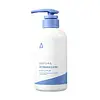What's inside
What's inside
 Key Ingredients
Key Ingredients

 Benefits
Benefits

 Concerns
Concerns

No concerns
 Ingredients Side-by-side
Ingredients Side-by-side

Water
Skin ConditioningGlycerin
HumectantNiacinamide
SmoothingSodium Polyacrylate
AbsorbentDipotassium Glycyrrhizate
HumectantHydrogenated Polydecene
EmollientPentylene Glycol
Skin Conditioning1,2-Hexanediol
Skin ConditioningCaprylyl Glycol
EmollientMannitol
HumectantPolysorbate 20
EmulsifyingXylitol
HumectantRhamnose
HumectantSodium Citrate
BufferingPolyquaternium-51
Skin ConditioningFructooligosaccharides
HumectantCaprylic/Capric Triglyceride
MaskingLaminaria Ochroleuca Extract
Skin ConditioningWater, Glycerin, Niacinamide, Sodium Polyacrylate, Dipotassium Glycyrrhizate, Hydrogenated Polydecene, Pentylene Glycol, 1,2-Hexanediol, Caprylyl Glycol, Mannitol, Polysorbate 20, Xylitol, Rhamnose, Sodium Citrate, Polyquaternium-51, Fructooligosaccharides, Caprylic/Capric Triglyceride, Laminaria Ochroleuca Extract
Water
Skin ConditioningButylene Glycol
HumectantGlycerin
HumectantPropanediol
SolventPentaerythrityl Tetraethylhexanoate
EmollientHydrogenated Poly(C6-14 Olefin)
Emollient1,2-Hexanediol
Skin ConditioningPhenyl Trimethicone
Skin ConditioningBis-Hydroxyethoxypropyl Dimethicone
EmollientSynthetic Wax
AbrasiveC14-22 Alcohols
Emulsion StabilisingSqualane
EmollientCetearyl Alcohol
EmollientHydroxypropyl Starch Phosphate
Xanthan Gum
EmulsifyingGlyceryl Stearate
EmollientHydrogenated Lecithin
EmulsifyingAcrylates/C10-30 Alkyl Acrylate Crosspolymer
Emulsion StabilisingC12-20 Alkyl Glucoside
EmulsifyingAcetyl Glucosamine
Skin ConditioningStearic Acid
CleansingGlyceryl Stearate Citrate
EmollientHydrogenated Vegetable Oil
EmollientGlyceryl Caprylate
EmollientTromethamine
BufferingPanthenol
Skin ConditioningPolyglyceryl-10 Stearate
Skin ConditioningPalmitic Acid
EmollientEthylhexylglycerin
Skin ConditioningDisodium EDTA
Gluconolactone
Skin ConditioningPolyglyceryl-3 Methylglucose Distearate
EmulsifyingCarbomer
Emulsion StabilisingThymol Trimethoxycinnamate
AntioxidantCholesterol
EmollientCeramide NP
Skin ConditioningGlucose
HumectantOenothera Biennis Oil
EmollientHydroxypropyl Bispalmitamide Mea
EmollientMannitol
HumectantMyristic Acid
CleansingLauric Acid
CleansingTocopherol
AntioxidantCopernicia Cerifera Wax Extract
Acrylates/Ammonium Methacrylate Copolymer
Silica
AbrasiveArachidic Acid
CleansingCaesalpinia Sappan Stem Powder
ExfoliatingOleic Acid
EmollientWater, Butylene Glycol, Glycerin, Propanediol, Pentaerythrityl Tetraethylhexanoate, Hydrogenated Poly(C6-14 Olefin), 1,2-Hexanediol, Phenyl Trimethicone, Bis-Hydroxyethoxypropyl Dimethicone, Synthetic Wax, C14-22 Alcohols, Squalane, Cetearyl Alcohol, Hydroxypropyl Starch Phosphate, Xanthan Gum, Glyceryl Stearate, Hydrogenated Lecithin, Acrylates/C10-30 Alkyl Acrylate Crosspolymer, C12-20 Alkyl Glucoside, Acetyl Glucosamine, Stearic Acid, Glyceryl Stearate Citrate, Hydrogenated Vegetable Oil, Glyceryl Caprylate, Tromethamine, Panthenol, Polyglyceryl-10 Stearate, Palmitic Acid, Ethylhexylglycerin, Disodium EDTA, Gluconolactone, Polyglyceryl-3 Methylglucose Distearate, Carbomer, Thymol Trimethoxycinnamate, Cholesterol, Ceramide NP, Glucose, Oenothera Biennis Oil, Hydroxypropyl Bispalmitamide Mea, Mannitol, Myristic Acid, Lauric Acid, Tocopherol, Copernicia Cerifera Wax Extract, Acrylates/Ammonium Methacrylate Copolymer, Silica, Arachidic Acid, Caesalpinia Sappan Stem Powder, Oleic Acid
 Reviews
Reviews

Ingredients Explained
These ingredients are found in both products.
Ingredients higher up in an ingredient list are typically present in a larger amount.
1,2-Hexanediol is a synthetic liquid and another multi-functional powerhouse.
It is a:
- Humectant, drawing moisture into the skin
- Emollient, helping to soften skin
- Solvent, dispersing and stabilizing formulas
- Preservative booster, enhancing the antimicrobial activity of other preservatives
Glycerin is already naturally found in your skin. It helps moisturize and protect your skin.
A study from 2016 found glycerin to be more effective as a humectant than AHAs and hyaluronic acid.
As a humectant, it helps the skin stay hydrated by pulling moisture to your skin. The low molecular weight of glycerin allows it to pull moisture into the deeper layers of your skin.
Hydrated skin improves your skin barrier; Your skin barrier helps protect against irritants and bacteria.
Glycerin has also been found to have antimicrobial and antiviral properties. Due to these properties, glycerin is often used in wound and burn treatments.
In cosmetics, glycerin is usually derived from plants such as soybean or palm. However, it can also be sourced from animals, such as tallow or animal fat.
This ingredient is organic, colorless, odorless, and non-toxic.
Glycerin is the name for this ingredient in American English. British English uses Glycerol/Glycerine.
Learn more about GlycerinMannitol is a sugar alcohol. It is a humectant and moisturizes the skin. In vitro (not tested on a living organism), mannitol displays antioxidant properties.
When found in aqueous solutions, mannitol tends to become acidic. This is because it loses a hydrogen ion. This is why mannitol can often be found with pH adjusting ingredients, such as sodium bicarbonate.
Fun fact: Mannitol can be found in foods as a sweetener. It can be naturally found in mushrooms, algae, fruits, and veggies.
Learn more about MannitolWater. It's the most common cosmetic ingredient of all. You'll usually see it at the top of ingredient lists, meaning that it makes up the largest part of the product.
So why is it so popular? Water most often acts as a solvent - this means that it helps dissolve other ingredients into the formulation.
You'll also recognize water as that liquid we all need to stay alive. If you see this, drink a glass of water. Stay hydrated!
Learn more about Water